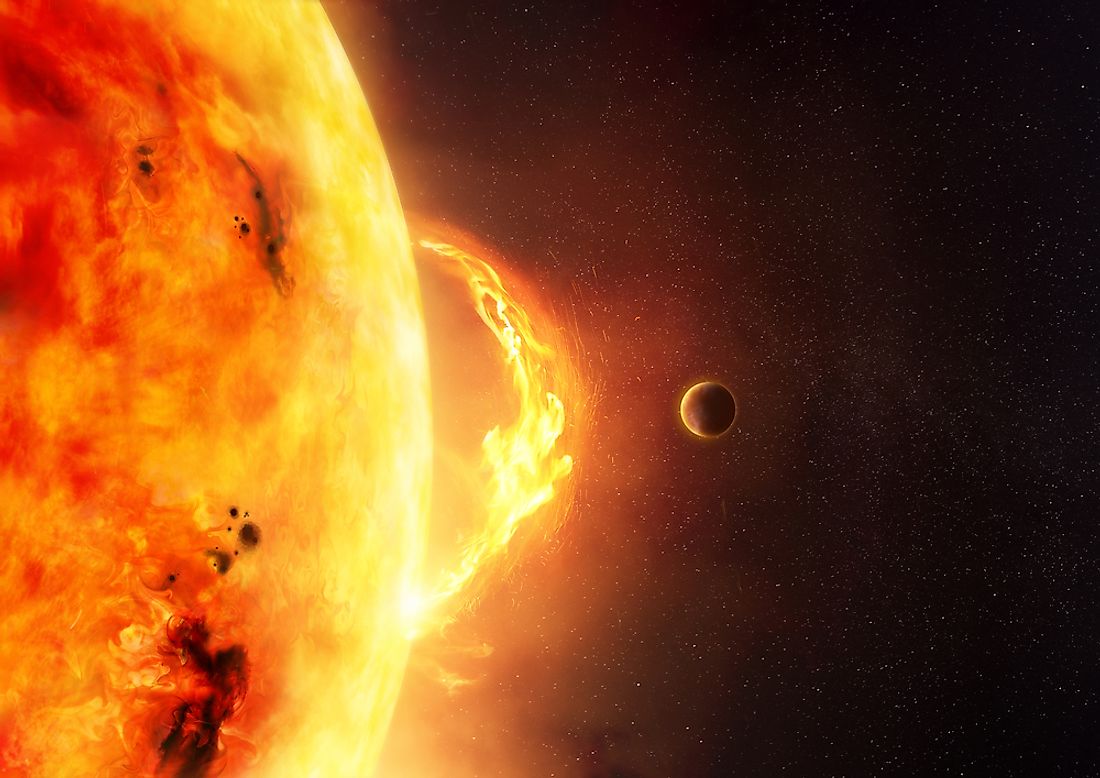What Is A Solar Flare?

A solar flare can be simply defined as an abrupt and powerful radiation burst or emission that takes place when built up magnetic energy in the solar atmosphere is released. In the solar system, solar flares have no equal in terms of explosive power. As observed by the human eye, solar flares are observed as bright patches on the sun that can last anywhere between a few minutes and several hours. The first recorded solar flare was on September 1, 1859, by two scientists called Richard Hodgson and Richard Carrington.
Causes of Solar Flares
Solar flares take place in active zones around sunspots. A sunspot refers to an ephemeral phenomenon on the sun’s photosphere observed as a spot that is darker than surrounding areas. The sunspot has a lower surface temperature that is a result of a magnetic field. The sudden release of the magnetic energy is what ultimately gives so much power to the flares. The energy emitted by a solar flare can be equated to the energy generated by millions of 100-megaton hydrogen bombs going off simultaneously.
Flares are caused by the interaction between fast-moving charged particles (such as electrons) and the plasma medium in the solar atmosphere. The fast-moving charged particles are as a result of a magnetic flux transfer which is also referred to as magnetic reconnection. This phenomenon of magnetic reconnection is what ultimately causes a sudden energy burst that speeds up the particles. The result is that the burst may expand outwards creating a coronal mass discharge. The source of solar flares is well known, but the mechanisms that are involved in the transformation of energy from magnetic to kinetic are still unknown.
Occurrence and Effects
The frequency that solar flares occur is also unknown since it varies. When the sun is “active,” there can be several flares in a day. On the other hand, periods when the sun is “quiet” translate to less than one flare in a week. The sizes of a solar flare also vary. Smaller flares are more frequent than bigger solar flares.
While most of the radiation released by a flare is not perceived by humans without proper equipment, the effects of a flare can be experienced. The effects are seen when X- Rays and other radiations affect the planet’s ionosphere leading to a disruption in long-range communication services.
July 3, 2012, marked a day when the earth was narrowly missed by a massive, potentially damaging, solar flare. The flare was so big that it was described as a solar super-storm. Data is still unclear, but NASA has set the chances of a similar event taking place between 2012 and 2022 at 12%.
Can Solar Flares Be Seen From Earth?
Thee flares affect all the layers of the solar atmosphere namely the corona, the chromosphere, and the photosphere. The result of a solar flare is that radiation is created that cuts across all wavelengths of the electromagnetic spectrum. The radiation produced includes the likes of radio waves, gamma rays, and several others that are cannot be perceived by the naked eye. For this reason, several solar flares pass humans by without them ever noticing unless they have specialized equipment.











